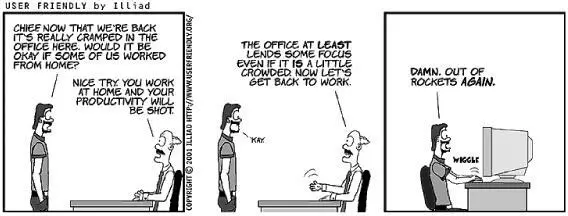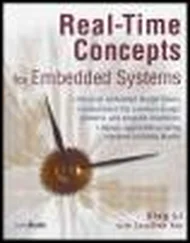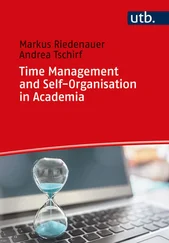Thomas Limoncelli - Time Management for System Administrators
Здесь есть возможность читать онлайн «Thomas Limoncelli - Time Management for System Administrators» весь текст электронной книги совершенно бесплатно (целиком полную версию без сокращений). В некоторых случаях можно слушать аудио, скачать через торрент в формате fb2 и присутствует краткое содержание. Жанр: Старинная литература, на английском языке. Описание произведения, (предисловие) а так же отзывы посетителей доступны на портале библиотеки ЛибКат.
- Название:Time Management for System Administrators
- Автор:
- Жанр:
- Год:неизвестен
- ISBN:нет данных
- Рейтинг книги:4 / 5. Голосов: 1
-
Избранное:Добавить в избранное
- Отзывы:
-
Ваша оценка:
- 80
- 1
- 2
- 3
- 4
- 5
Time Management for System Administrators: краткое содержание, описание и аннотация
Предлагаем к чтению аннотацию, описание, краткое содержание или предисловие (зависит от того, что написал сам автор книги «Time Management for System Administrators»). Если вы не нашли необходимую информацию о книге — напишите в комментариях, мы постараемся отыскать её.
Time Management for System Administrators — читать онлайн бесплатно полную книгу (весь текст) целиком
Ниже представлен текст книги, разбитый по страницам. Система сохранения места последней прочитанной страницы, позволяет с удобством читать онлайн бесплатно книгу «Time Management for System Administrators», без необходимости каждый раз заново искать на чём Вы остановились. Поставьте закладку, и сможете в любой момент перейти на страницу, на которой закончили чтение.
Интервал:
Закладка:
Go away and arrange your mutual interruption shield right now. I'll wait.
Hey, what part of "right now" didn't you understand? You didn't make that arrangement, did you? Please do it now before you continue. I really want you to be able to read this book.

Figure 1-1.
What's So Difficult About Time Management?
Ah, now we can really begin!
Time management is difficult for SAs because we are constantly being interrupted. How can we get anything done if we are constantly pausing to fix emergencies or respond to requests that arrive in person, via email, or via the newest source of interruptions, instant messages (IMs)? How many times have you told your boss that a project would take two uninterrupted days to complete, which means a month of actual time? Returning to a task takes a long time. If an interruption takes one minute, and it takes two minutes to return to your project, you're actually traveling backward in time! H. G. Wells would be impressed! Worst of all, returning to your project after an interruption can lead to errors. Often, when I'm debugging a problem, I find the actual "error" was that I skipped a step after returning from an interruption!
Management judges an SA by whether projects get done. Customers, however, judge you by whether you are available to them. These two priorities play against each other, and you're stuck in the middle. If you are infinitely available to customers, you will never have time to complete the projects that management wants to see completed. Yet, who approves your pay raises?
Why a book on time management just for SAs? This book needs to be different from your average "time management" book because SAs are different. In particular:
Our problems are different. SAs have an unusually high number of interruptions that prevent us from getting our projects done.
Our solutions are different. SAs can handle more high-tech solutions such as request trackers, email filtering with procmail, automation scripts, and other tools unsuitable for the average, non-technical person.
We lack quality mentoring. SAs need to learn the fundamentals of to do list management, calendar management, and life-goal management just like anyone else. However, our normal career path usually doesn't lend itself to learn these things. Our mentors are technical peers, often on email lists, and often in different parts of the world. There are fewer opportunities to learn by watching, as a supervisor often learns from a director.
[*]In this book, I will use the term "customer" to denote any internal or external user of your computers, network, applications, and so on. I prefer "customer" over "user" because it better represents the relationship SAs should have with the people they serve.
The Principles of Time Management for SAs
There are six principles that I base all my techniques on. I don't claim that any of these are my own invention, but I certainly put my own spin on them. You will see these principles throughout the book:
One "database" for time management information (use one organizer).
Conserve your brain power for what's important (conserve RAM).
Develop routines and stick with them (reuse code libraries; don't reinvent the wheel).
Develop habits and mantras (replace runtime calculations with precomputed decisions).
Maintain focus during "project time" (be like a kernel semaphore).
Manage your social life with the same tools you use for your work life (social life isn't an optional feature).
Let's take a look at each one of these principles in greater detail.
One "Database" for Time Management Information
The central tool for time management is your Personal Digital Assistant (PDA) or Personal Analog Assistant (PAA), which you will use to store your to do list, calendar, and life goals lists. I'm sure you know what a PDA is: a Palm Pilot, Zaurus, or similar product. A PAA is the paper equivalent. You've seen these in many shapes and forms and by names such as organizer, binder, planner, datebook, or even Filofax.
Whether you choose to use a PDA or PAA, it will become the platform for just about every technique in the rest of the book. By putting all your information in one place, you won't have to jump between different systems. If you have disorganized habits, this will be the tool for getting organized. If you are overly organized, this will be your tool for slimming down to a simple, basic system that saves you time and prevents you from spending time organizing your organization.
I'm going to use the term organizer to mean either a PDA or PAA. It doesn't matter how hi-tech or low-tech you go. When I specifically mention PDA or PAA, I'll be referring to a technique or example that can only be performed with that particular kind of organizer.
We're going to make sure that your organizer is something you can trust. What you write in your organizer won't be forgotten, deleted, or lost, and it won't disappear like invisible ink. Until you trust your organizer, you aren't going to be as facile with the rest of your time management techniques. Developing this trust, like forming a new habit, takes time.
Conserve Your Brain Power for What's Important
It's important to have an uncluttered brain. A cluttered brain is full of distractions that prevent you from staying focused. You're going to learn to use external storage for anything you aren't focused on right now.
Don't take it personally, but your brain isn't as good at recalling things as a piece of paper or a computer. Don't use your brain to track tasks or appointments. Use your organizer, a request-tracking database, a Wiki, or anything other than your brain.
Your brain only has a certain amount of capacity. It's either RAM or CPU power, depending on how you envision the brain. If you clutter your brain with the knowledge of all the tasks you need to do in the future, that's taking space away from the task you are working on right now.
In fact, when I'm working on Project A but worried about Project B, the best thing I can do is to write Project B down in my to do list and try to get it out of my head. Then, I can focus on Project A. I trust the to do list to "remember" B for me, so I don't have to continue to waste mental energy on it.
It might be apocryphal, but it is believed that Albert Einstein's closet contained seven identical suits—one for each day of the week. This was, the story goes, so that he could conserve his brain power for physics and not waste it on the mundane task of deciding what to wear each day. Maybe this is why Steve Jobs always wears black turtlenecks. (Personally, I have many pairs of the exact same socks, but that's just so I never have more than one unmatched sock when I do laundry.)
With the help of this book, you're going to eliminate the excuse "I forgot" from your vocabulary. You may miss a deadline for other reasons, but it won't be because you were trying to remember so many things that it slipped your mind.
Getting tasks, instructions, and knowledge out of your brain and onto paper or in a digital repository is the first step to getting help with those tasks. While our brains are single-user, and no one, I hope, can read our minds, external formats are multiuser and open up the possibility of others helping us with our work. For example, documenting a procedure and putting it on a web site means other people can study and hopefully do the procedure. Using a request-tracker database means other SAs can take items, customers can see the progress of their requests, and management can gather statistics. Why try to memorize the list of services that need to be tested after an operating system is upgraded? Keep the list in a spreadsheet rather than your brain. Now you can share the spreadsheet with others to see if you are missing anything.
Читать дальшеИнтервал:
Закладка:
Похожие книги на «Time Management for System Administrators»
Представляем Вашему вниманию похожие книги на «Time Management for System Administrators» списком для выбора. Мы отобрали схожую по названию и смыслу литературу в надежде предоставить читателям больше вариантов отыскать новые, интересные, ещё непрочитанные произведения.
Обсуждение, отзывы о книге «Time Management for System Administrators» и просто собственные мнения читателей. Оставьте ваши комментарии, напишите, что Вы думаете о произведении, его смысле или главных героях. Укажите что конкретно понравилось, а что нет, и почему Вы так считаете.












